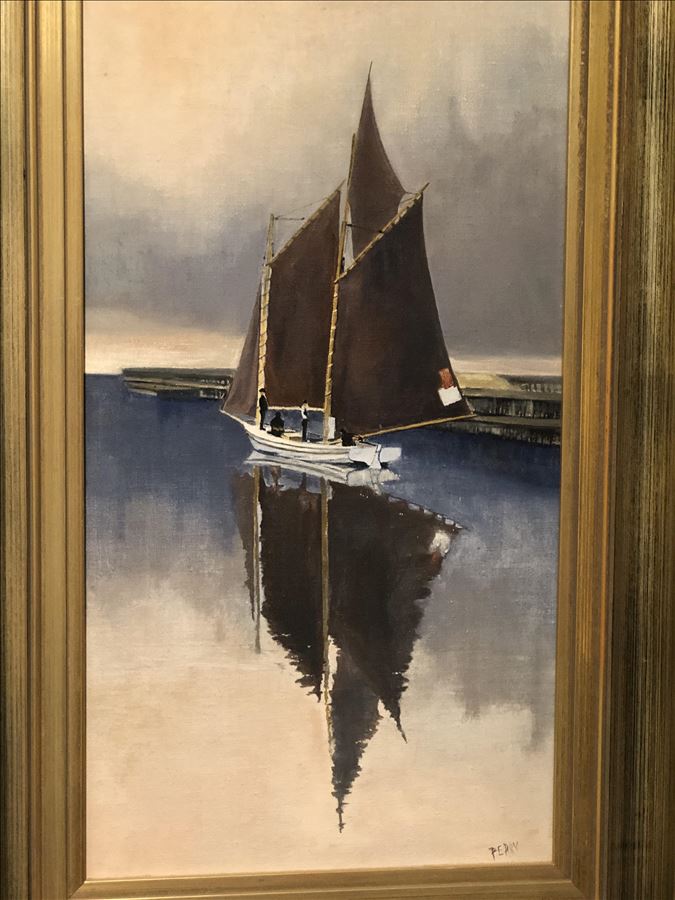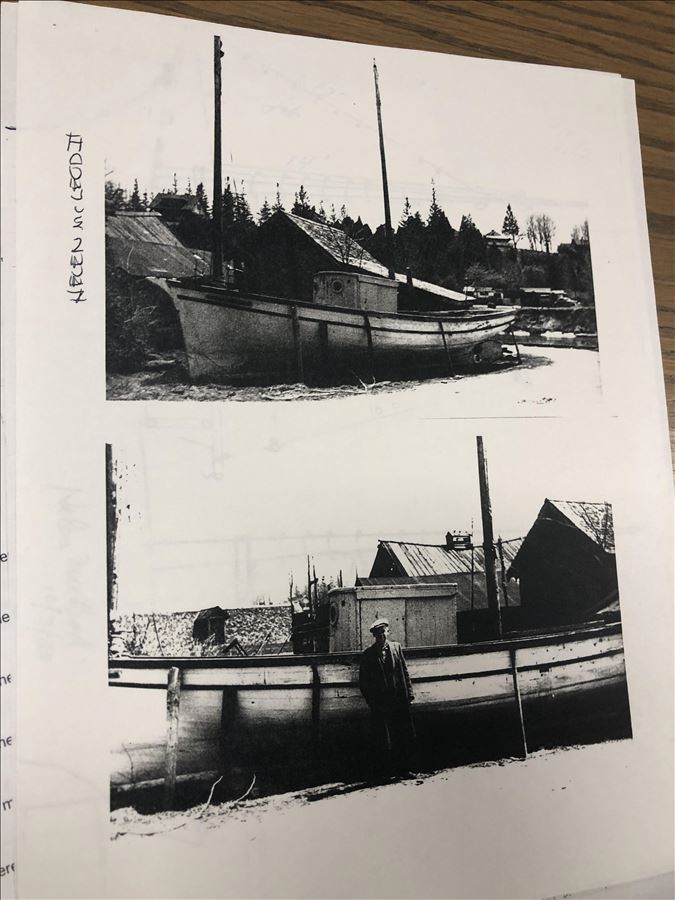You’re rowing out to your favorite fishing spot. The light breeze creates ripples on the crystal clear water. As the blazing sun starts to beat down on you, the air heats up. An on-shore breeze starts to pick up. Every inch of your beautiful hand crafted Mackinaw Boat is packed with fresh fish. Soon it is time for you to start heading back to shore. You put up the sails because it is very difficult to row back with so many fish. You pick up speed as you head downwind with your sails filled with air. “Thunder Bay is one of the best places to fish by sail because, being surrounded by land on three sides, like a wind tunnel, a southeast breeze kicks up almost every afternoon on Thunder Bay, a little more regularly than other ports that are not in the bay.” said Jim Johnson a retired DNR Michigan Fisheries Biologist.
Mackinaw Boats are very inexpensive and great for fishing. These handcrafted boats were one of the most popular fishings boats in the 19th century. Rowing and sailing were very common when you were fishing in one of these boats. Pat Labadie a Thunder Bay National Marine Sanctuary Historian, talking about Mackinaw Boats in the Great Lakes, said that “Mackinaw Boats were the commercial fishing craft of the 19th century.”
There are two types of Mackinaw Boats, clinker built and carvel built. Clinker built had overlapping planks on the hull. This type of build was sloppier but did not require as much caulking. A carvel built hull is very smooth, but clinker was more common because it sailed better in the water. These fishing boats ranged in size from 16-40 feet. It was most common to see boats from 32-36 feet. Many different types of materials were used, like red or white oak and cedar. White oak is very common for larger crafts because it is solid and durable.
Pat Labadie owned a Mackinaw Boat named the Helen Macleod. He found the Helen Macleod in a junkyard near Detroit, and kept the Helen Macleod for a few years. He later donated it to a museum in South Bend, Ontario, where it is still on display today.
Mackinaw Boats have not changed much since the originals were designed, but some changes to the design and construction include the materials for nails, different sails and the quality of the ropes. The rigging for these boats changed from the original design too.
There are several of these beautiful boats preserved around Michigan. Fishing was the main purpose of these boats. Gill nets were commonly used for fishing in the Great Lakes. Whitefish was the most popular species caught. Lake trout, bass, walleye and sturgeon were also fished by Mackinaw Boat crews. A city in Wisconsin, called Two Rivers, used to have the largest fleet of Mackinaw Boats.
There are several of these beautiful boats preserved around Michigan. Today, racing Mackinaw Boats while rowing and sailing are very popular in Northern Michigan. Tawas, Michigan holds annual races. On September 29, 2019 there will be a race in Tawas, Michigan.
Written by Margaret Thayer- Alpena High School- Science in the Sanctuary
Resources-Pat Labadie, Thunder Bay National Marine Sanctuary Historian Jim Johnson, DNR Michigan Biologist


